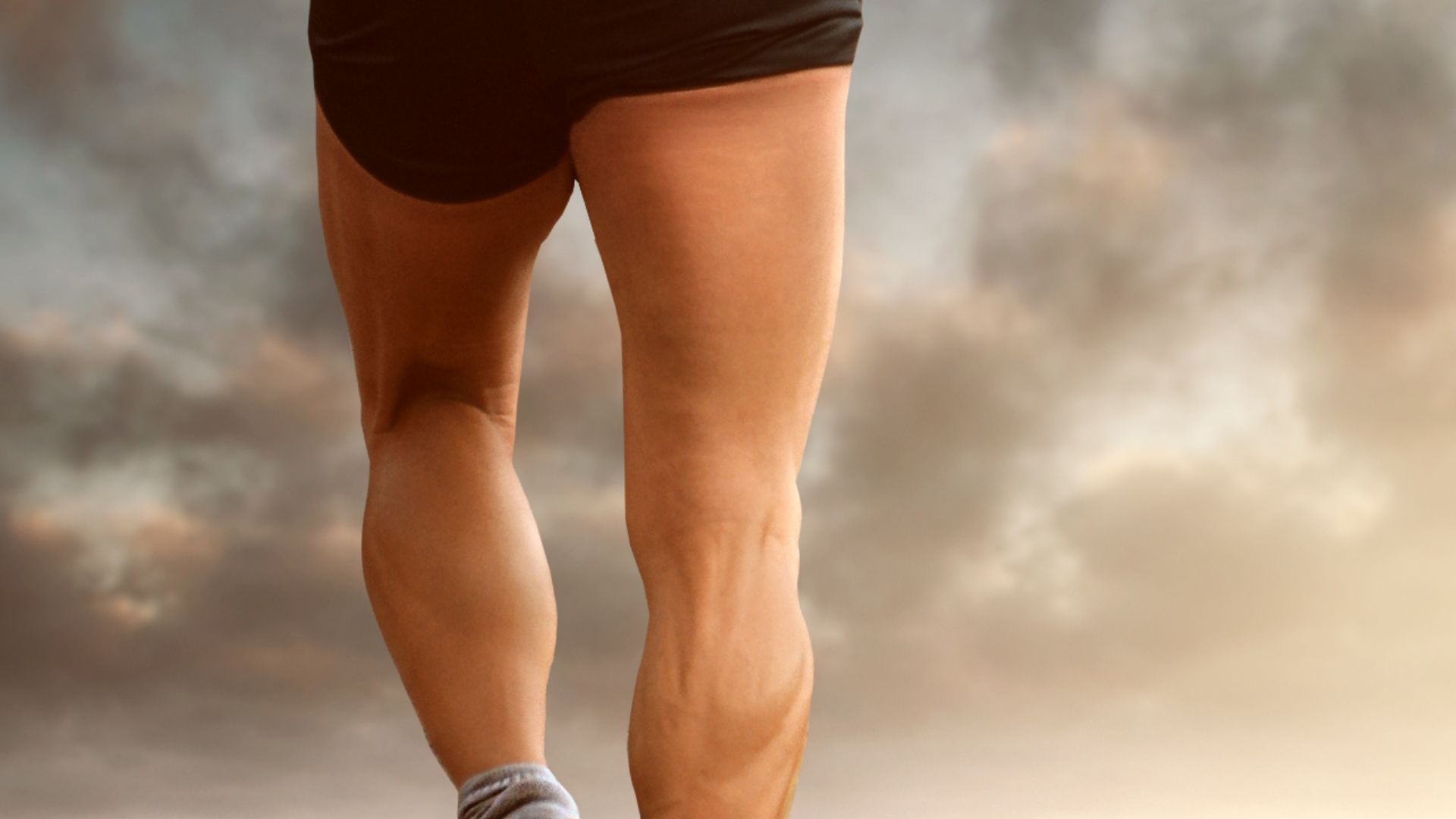Are you wondering whether squats can result in larger or smaller legs over time? Squats are a popular exercise for building leg muscles, but there is some debate about whether they actually lead to bigger legs.
In this post, we will explore the science behind squats and leg size to determine whether they can make your legs bigger or smaller over time. Keep reading to find out more!
Squats can increase the size of the leg muscles, especially glutes, quads, and hamstrings, by building the muscles. Hence, doing squats can make the overall legs look bigger. Continuing squatting can increase muscle bulk, and the thighs and legs will continue to grow in size.
However, the size increase depends on various factors such as the type of squats, the frequency, intensity, and duration of the exercise, as well as the individual’s body type and genetics. As a result, squats may not necessarily lead to larger legs for everyone.
Squats can increase the size of the leg muscles.
Squats are a compound exercise that targets multiple muscle groups in the legs, including the glutes, quads, and hamstrings.
When you perform squats, your muscles are put under significant stress, which triggers the process of muscle hypertrophy or muscle growth.
This process involves the breakdown of muscle fibers during exercise and the subsequent repair and growth of these fibers during rest and recovery periods.
The glutes, quads, and hamstrings are some of the largest muscle groups in the body, and squatting can help you build and strengthen these muscles. Over time, this can lead to an increase in muscle mass and overall size of the legs.
Note that the extent to which squatting will increase leg size can vary depending on factors such as genetics, diet, and training frequency and intensity.
if you are looking to build muscle in your legs, it’s essential to combine squats with a balanced diet.
Continuing squatting can increase muscle bulk, and the thighs and legs will continue to grow.
When you continue to squat regularly, your muscles are continually subjected to stress, which prompts them to adapt and grow to handle the load.
As you continue with your squat routine, your muscles will undergo the process of muscle hypertrophy, which involves the breakdown of muscle fibers during exercise and subsequent repair and growth during recovery periods.
Over time, this process of muscle hypertrophy can lead to an increase in the size and bulk of your leg muscles, including the quads, hamstrings, and glutes.
As you continue to challenge your muscles with heavier weights or more reps, you can continue to stimulate muscle growth and increase muscle size further.
It’s important to note that the extent to which squatting will lead to muscle growth and size increase can vary depending on various factors, including genetics, diet, and training intensity.
it’s essential to give your muscles adequate rest and recovery time between workout sessions to avoid overtraining and injury.
Here is a chart that summarizes the findings from several studies on the effects of squats on leg size over time:
Study |
Sample Size |
Age Range |
Training Protocol |
Results |
|---|---|---|---|---|
| Krieger et al. (2018) | 24 | 18-35 years | Back squats 3x/week for 6 weeks | Increased quadriceps muscle volume by 5.1% |
| Raastad et al. (2013) | 15 | 18-40 years | Back squats 2x/week for 10 weeks | Increased muscle thickness in all quadriceps muscles |
| Campos et al. (2002) | 10 | 18-30 years | Back squats 3x/week for 8 weeks | Increased quadriceps muscle volume by 7.6% |
| Morton et al. (2016) | 49 | 18-35 years | Squats 1x/week+leg press 2x/week for 10 weeks | No significant change in quadriceps muscle volume |
| Escamilla et al. (2001) | 13 | Not reported | Squats and leg press 3x/week for 8 weeks | Increased quadriceps muscle thickness by 11.9% |
As you can see, the results are mixed. Some studies have found that squats can lead to larger leg muscles over time, while others have found no significant change.
Note that the training protocols and sample sizes varied between studies, which may have influenced the results. However, overall, there is evidence to suggest that squats can contribute to leg muscle growth over time when performed correctly and with sufficient resistance.

The size increase depends on the frequency, intensity, duration of the exercise, and genetics.
When it comes to squats, there are many different variations and techniques that can be used.
For example, front squats, back squats, and sumo squats all target different muscle groups and can lead to varying results in terms of muscle size.
Additionally, the frequency and intensity of the exercise can play a role in how quickly and significantly muscle size increases.
Someone who is consistently performing squats with heavy weights and multiple sets may see faster muscle growth than someone who only does squats once a week with lighter weights.
It’s also important to consider an individual’s body type and genetics.
Some people may naturally have a greater propensity for muscle growth, while others may struggle to see significant gains even with consistent and intense exercise.
Additionally, factors like age, diet, and overall health can impact one’s ability to increase muscle size.
While squats can certainly be an effective exercise for increasing muscle size, the specific results will depend on a variety of individual factors.
It’s important to approach fitness and exercise with a personalized and holistic approach in order to achieve the best possible outcomes.
So, here’s a chart table that summarizes the different factors that can affect leg muscle growth from squats:
Factor |
Impact on Muscle Growth |
|---|---|
| Frequency | Squatting 2-3 times per week can promote muscle growth, while frequent squatting (more than 4 times per week) may not allow enough time for muscles to recover and grow. |
| Intensity | Lifting heavy weights for fewer reps (3-5) can promote muscle growth, while lifting lighter weights for more reps (10-15) may be more effective for endurance but not as much for size increase. |
| Duration | Longer sets (more than 60 seconds) can promote muscle growth, while shorter sets (less than 30 seconds) may be more effective for strength gains but not as much for hypertrophy. |
| Genetics | Genetics plays a role in determining the rate and extent of muscle growth from squats. People with a larger frame and more muscle fibers may respond better to squats than those with a smaller frame or fewer muscle fibers. |
Note that these factors interact with each other and should be tailored to individual goals and abilities for optimal results. Additionally, other factors such as nutrition, rest and recovery, and proper form also play a crucial role in muscle growth.
My final thought
So, while squats are an effective exercise for building leg muscles and increasing muscle size for many people, they may not necessarily lead to larger legs for everyone.
The extent to which squats will increase muscle size can vary depending on factors such as body type, genetics, training frequency and intensity, and diet.
For example, some people may have a body type that is naturally more suited to building muscle mass, while others may have a harder time seeing significant muscle growth in response to exercise.
A person’s genetics can play a role in determining how much muscle mass they are able to build and how quickly they are able to see results.
Factors like training frequency and intensity can impact muscle growth. Someone who performs squats consistently and with heavy weights is likely to see more significant muscle growth than someone who only does squats occasionally with lighter weights.
Diet is also an important factor in muscle growth, as consuming enough protein and other nutrients is essential for muscle repair and growth.
While squats can be an effective exercise for increasing muscle size in the legs, the results will vary depending on individual factors.
It’s important to approach fitness and exercise with a personalized approach and be patient and consistent in your efforts to see the best possible outcomes.
Conclusion
Squats can result in larger legs if performed correctly and with sufficient resistance.
According to a study published in the Journal of Sports Science and Medicine, squatting to 90 degrees of knee flexion can be sufficient to hypertrophy the vastus muscles of the quadriceps, and variations of the squat exercise exist to maximize 1 repetition maximum (1RM) potential.
However, the study also notes that the effects of squat training with different depths on lower limb muscle volumes may vary depending on factors such as training frequency, intensity, and volume.
Therefore, the size of the legs may ultimately depend on individual factors such as genetics, diet, and exercise routine.
Sources:

Hey there, it’s Mike Rrsq, the Editor-in-Chief over at Jsquat.com, and I’m absolutely obsessed with all things squat fitness! I’ve been lucky enough to get some serious recognition for my work in this field. With a solid background in the fitness and wellness industry, I’ve been there right from the get-go, helping shape this website into what it is today.
You see, I’m not just the boss around here; I’m also a passionate contributor. I love sharing my insights through my articles, and trust me, they’re not your run-of-the-mill stuff. Each piece I write is a labor of love, filled with my expertise and real-world experience in the fitness universe. So, if you’re into fitness and looking for some inspiration, you’re in the right place!

